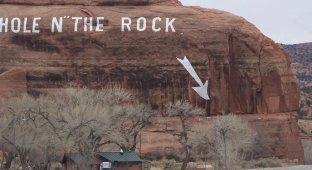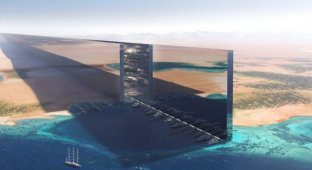Al-Naslaa stone: who cut it so smoothly (7 photos)
The mysterious Al-Naslaa stone is located in Saudi Arabia. Even in ancient times, it was “cut” in half along a perfectly straight line. Many experts and ordinary interested people are wondering: what led to the Al-Naslaa rock splitting with such precision, and who needed it? Let's find out several famous versions. 
Mother Nature always reminds us that the world is still full of mysteries. An example of this is the Al-Naslaa rock, which is located in the Taima oasis in Saudi Arabia. The peculiarity of the stone is that it is split (or cut) in half along a perfectly straight line. For centuries, people have puzzled over what and why split the giant stone into two parts: the movement of tectonic plates, humans, or soil erosion? Or maybe the aliens pierced him with a giant laser beam? The rock is believed to be over 4,000 years old and was discovered in 1877. Since then, many versions have emerged of how it could have split. 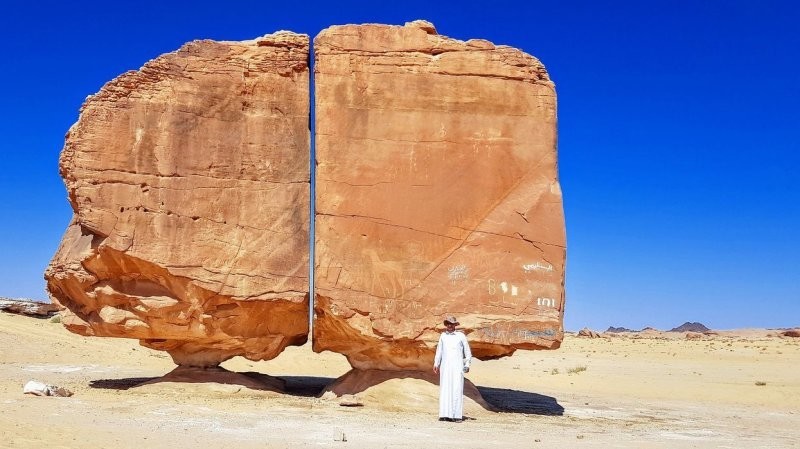
In addition, carvings and ancient drawings were discovered on the rock: for example, images of hunting scenes involving Arabian horses and wild goats. Some experts believe that these drawings indicate that the rock was split in two not only due to natural causes. Here are some of the most famous hypotheses from scientists, none of which have been confirmed: 
1. Natural geological processes 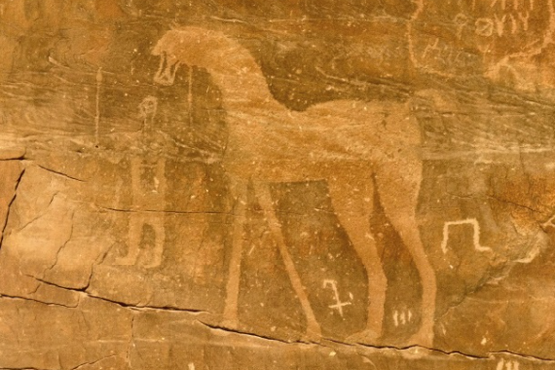
The rock is made of sandstone - and this rock is layered. This is why, due to a combination of factors, including erosion and weathering, cracks could appear in the rock. This could cause the rock to split along natural fault lines.
2. Winds, rains and temperature changes 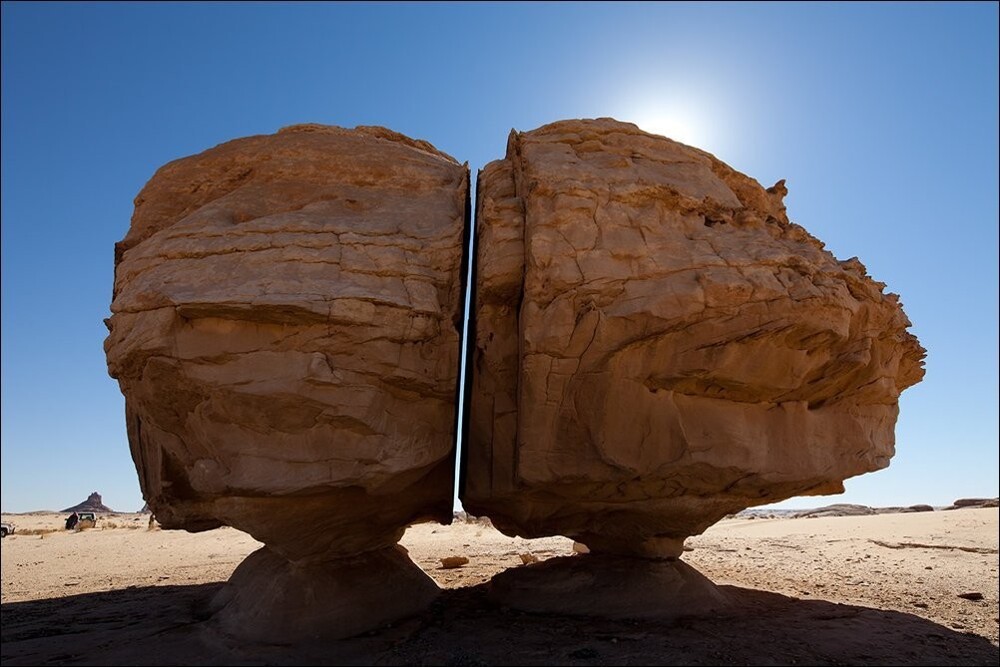
Changes in weather conditions and temperatures can contribute to the deterioration of sandstone. For example, at the site of the split there could once have been a crack through which winds and sand blew for thousands of years. Under such conditions, such a smooth straight line could form. According to IFLSciencesuggests, the cracks could also be caused by freezing and thawing, for example, if water got into a small crack. The water could freeze, and when it thawed, the crack increased in size and split the rock.
3. Tectonic activity 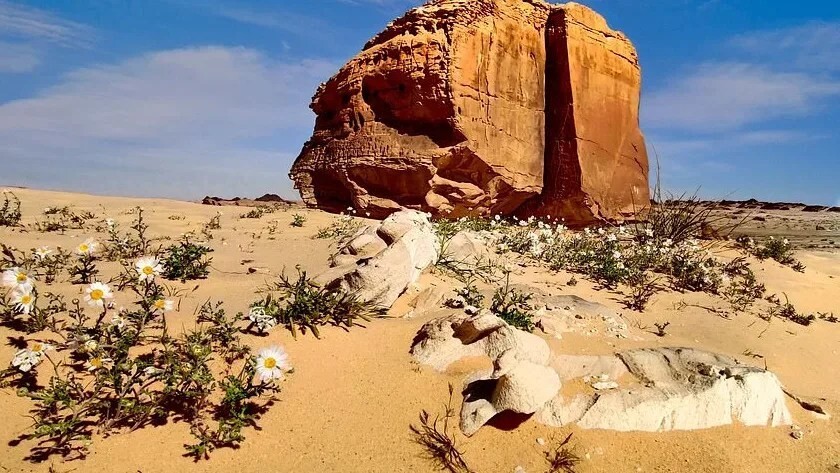
Some geologists note that tectonic activity is observed in the Taima oasis area. It is therefore possible that movements in the earth's crust at some point led to the splitting of the rock into two parts.
4. The creation of man 
Of course, there is a version about aliens who cut the stone with a laser - but that’s a completely different story. There are also arguments in favor of human participation. Given that the rock is made of sandstone, it could be split down the center with simple tools. Perhaps ancient civilizations wanted to mark a place of religious significance, a geographical landmark, or simply create a work of art in this way. For some, the rock resembles sculptures by artist Barbara Hepworth (photo above).













